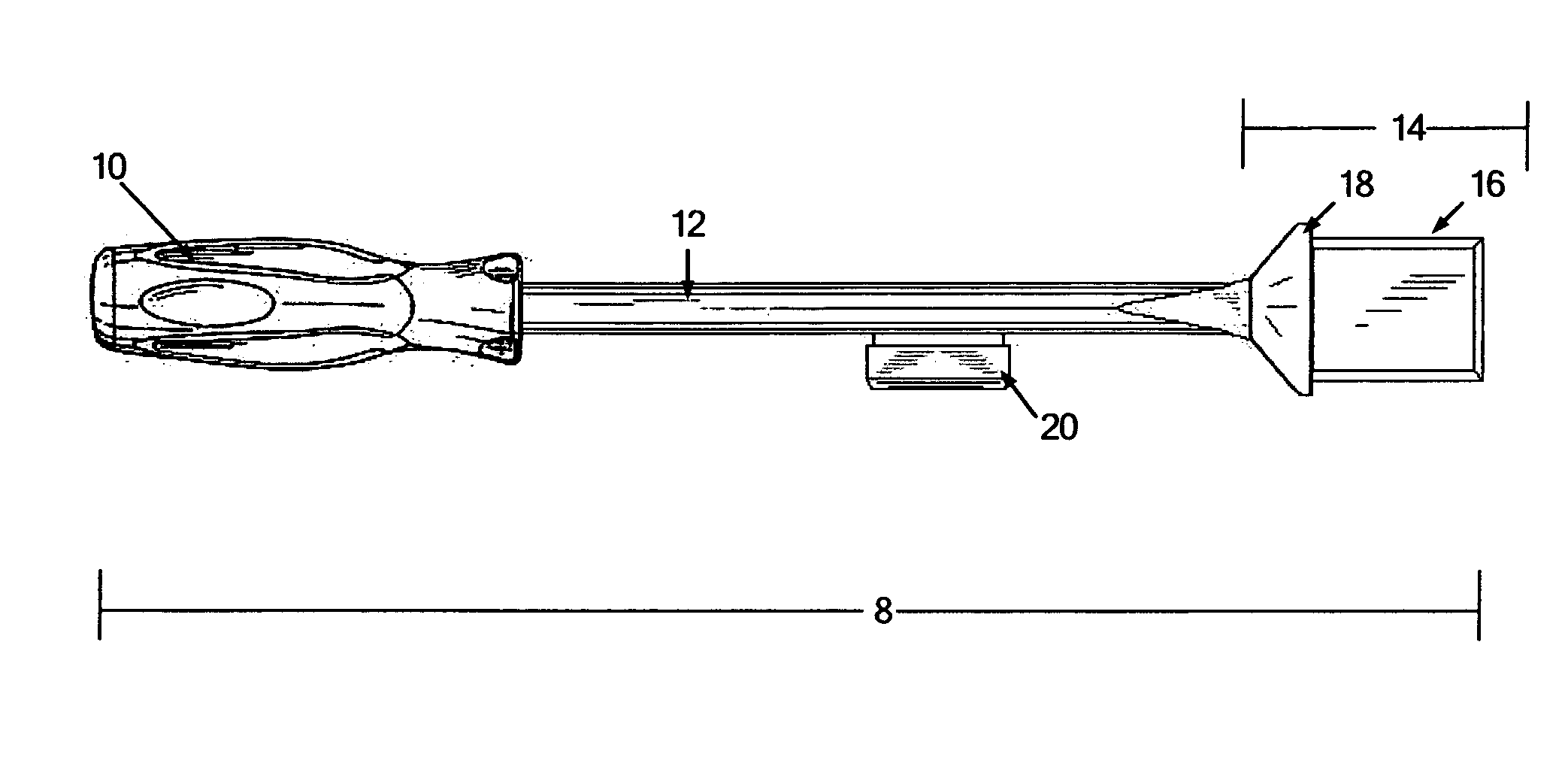Delamination tool with enhanced force response
- Summary
- Abstract
- Description
- Claims
- Application Information
AI Technical Summary
Benefits of technology
Problems solved by technology
Method used
Image
Examples
Embodiment Construction
[0025]While the present invention is susceptible of embodiment in various forms, there is shown in the drawings and will hereinafter be described a presently preferred embodiment of the invention, with the understanding that the present disclosure is to be considered as an exemplification of the invention, and is not intended to limit the invention to the specific embodiment illustrated.
[0026]The present invention is directed to a tool for modifying or interacting with a surface wherein two simultaneous force vectors are applied to the tool so as to control the resulting effect of the tool. As depicted in FIGS. 1 through 14, and specifically in FIG. 1, impact tool 8 is generally comprised of a handle 10, a shaft having a proximal and a distal end 12, a working face 14, a blade element 16 and a strike plate 20.
[0027]Handle 10 is connected to the proximal end of shaft 12 wherein the shaft has a finite length. Preferably, shaft 12 is between 6 and 18 inches in length, though specialize...
PUM
| Property | Measurement | Unit |
|---|---|---|
| Fraction | aaaaa | aaaaa |
| Length | aaaaa | aaaaa |
| Length | aaaaa | aaaaa |
Abstract
Description
Claims
Application Information
 Login to View More
Login to View More - R&D
- Intellectual Property
- Life Sciences
- Materials
- Tech Scout
- Unparalleled Data Quality
- Higher Quality Content
- 60% Fewer Hallucinations
Browse by: Latest US Patents, China's latest patents, Technical Efficacy Thesaurus, Application Domain, Technology Topic, Popular Technical Reports.
© 2025 PatSnap. All rights reserved.Legal|Privacy policy|Modern Slavery Act Transparency Statement|Sitemap|About US| Contact US: help@patsnap.com



